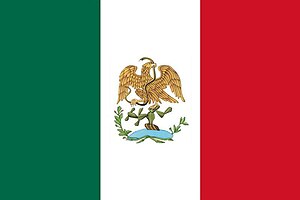 Image via Wikipedia
Image via WikipediaThe 2nd UK RAD sequencing meeting took place at the e-Science institute in Edinburgh. John Davey did a brilliant job of organizing the event and the e-Science is always a good venue for meetings and workshops.
The meeting was split into the morning session were we heard from the developers of RAD-sequencing and useful bioinformatic tools from John Davey:
RADtools.
Dr William Cresko (Oregon) talked about the history of RAD tags and some recent applications in
their lab which mainly center around understanding phenotypic evolution in the non-model three spined stickleback.
Dr Susan Bassham (Oregon) brought up quite a few practical issues on the molecular side of things. One that stuck to mind, is that it is much better to use restriction enzymes that will result in similar fragment sizes and smaller fragments are better so that the intensity of the dots on the Illumina cell are similar. Ideally, the GC content of your samples that you are planning to mix, should have similar GC-content, so mixing different species is probably not recommended.
Dr Paul Hohenlohe (Oregon) talked about cleaning up the data after sequencing. How to detect sampling biases: different tags, different alleles and sequencing errors. Other sources of error include PCR variance, polymorphisms at the RAD sites. All these need to be accounted for in the analyses. He has developed a maximum likelihood genotyping based on multinomial distribution of the reads. The sequencing error parameter is estimated independently for each site. His
most recent paper goes into further detail.
Dr Simon Baxter (Cambridge) is using RAD-tags for gene discovery and linkage mapping in the Diamond-back moth. He is mainly interested in the evolution of resistance to pesticides.
Dr Maureen Liu (Nottingham) is using RAD-tag to determine the genetic mechanism for Left-Right chirality in the pond snail. Out of the 70,000 RAD-tags she got from cutting the 1.4Gb genome with the restriction enzyme SbfI, she found a subset of 19 that were linked to chirality. She also managed to link it to a specific gene but kept the name of the gene hush hush.
Dr Shapiro and Dr Justin Gerke (Princeton) used RAD-tag for a global survey of
C. elegans. They found that some strains share nothing, others share everything but most share about 40% of their genome and 94% of the strain pairs analysed share one fragment. The fragments shared are also large. They suggest that this may be due to recent migration but selection, both background selection and positive sweep, may also play a role.
The remaining afternoon talks were about projects that were getting started and it was a good opportunity for the speakers to receive advice from the guys who had already used RAD-tag.
- Developing RAD markers as a resource for plant breeding using the perennial ryegrass Lolium perenne. Dr Matt Hegarty (Aberystwyth)
- Unearthing the functionally relevant genetic diversity from the earthworm
genome. Dr Pete Kille (Cardiff)
- Exploring the use of RAD markers in tree breeding programmes. Dr Pablo Fuentes Utrilla (Edinburgh)
- RAD Sequencing for applied conservation genetics. Dr Rob Ogden (TRACE Network, Edinburgh)
- Adaptive significance and genetic basis of a balanced colour-
polymorphism in Philaenus spumarius. Dr Octavio Paulo (Lisbon)
- RAD genetic mapping of reproductive mode in tadpole shrimps. Tom Mathers (Hull)
- The genetic architecture of a fundamental social trait. Dr Yannick Wurm (Lausanne)
All the talks were very honest about the difficulties of the approach. I really got the feeling that the community was working together to improve the technique and advise researchers on how to use the method.
Update: The talks are now available
here.

 Image via Wikipedia
Image via Wikipedia






![Reblog this post [with Zemanta]](http://img.zemanta.com/reblog_e.png?x-id=6c8ec23c-76ef-48b8-b231-7242e8d1ca12)



